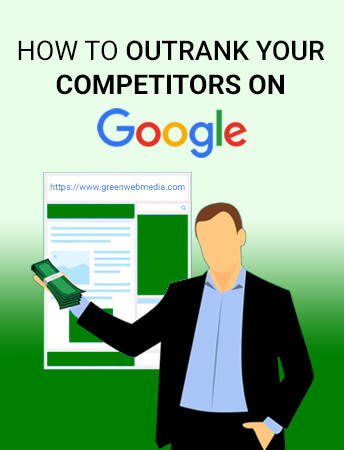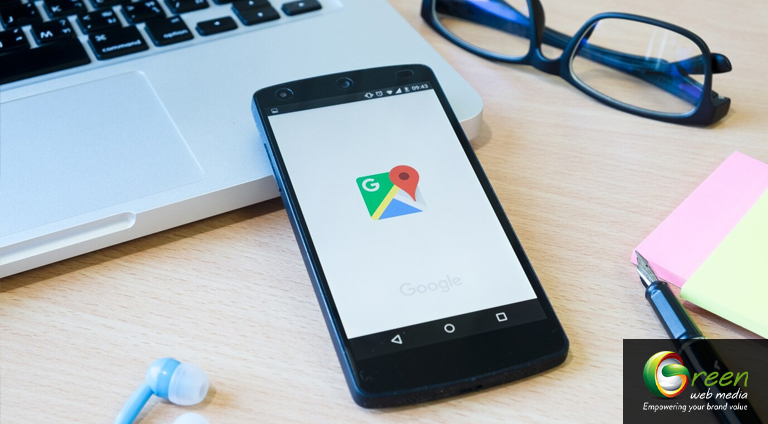Google is Reducing the Number of Organic Search Results – What are the Implications?

Businesses have long been leveraging cost-effective SEO campaigns to boost online visibility and get click-throughs for a fraction of the cost of PPC ads. As PPC and SEO specialists, we keep a close eye on Google’s constantly changing search engine algorithms and user experience enhancement initiatives. The drop in the amount of organic search results displayed on a page has piqued the interest of digital marketers and website owners.
In this blog, we’ll explore the reasons behind Google’s decision to limit organic results to 8 or 9 per page. We will also check out the implications it has on search engine optimization.
The current state of the search results page
There have been many published sources that corroborate our views on Google favouring paid searches more than organic searches. Moz analyzed 10,000 search results, and it shows how far down organic search starts appearing on the result page.
In 2013, the average organic link started at 375 pixels down the page (1st pixel = the very top of the page). In 2020, the number dropped to a staggering 616 pixels.
Nowadays, a typical search result shows 4 paid results on the top and 3 paid results on the bottom. This means that roughly 65% of the page is devoted to paid results.
Also, now we see a host of various modes of results in addition to just text results. We now see –
– Featured Snippets
– Shopping carousel
– Videos
– Knowledge graph panel
– ‘People also ask’ or PAA section, and
– Google Maps
So organic search results have now started appearing way down these modes. Hence there is a lower number of spots available for organic search rankings on the search results page.
What this means that SEO webmasters now have to put more effort to land on the limited spots given to organic results on first page.
We will try to dive into the reasons why Google has made this change. This update carries a lot of implications for SEO marketers. So, in the second half of the blog, we will also see what is the impact of this change on SEO campaigns.
Why has Google reduced the number of spots for organic search results?
There is no official statement from Google on this transition. But savvy digital marketers have tried to see why Google has done this. Here are a few points that may provide reasons for preferring paid search spots over organic searches.
1 – Enhanced Mobile Experience
A majority of internet users access Google through mobile devices. Hence, optimizing the user experience on smaller screens has become a top priority.
Google may want to ensure easy navigation by reducing the number of organic results. With this step, it ensures that users can easily navigate through search results without excessive scrolling. This leads to a more intuitive and efficient mobile experience.
2 – Featured Snippets and Knowledge Panels
Google has increasingly integrated featured snippets and knowledge panels into search results. This helps it to deliver quick and concise answers to user queries.
Users get more concrete information when Google reserves space for these informative snippets. They can find answers faster. This makes the search process more convenient and time-effective.
3 – Balancing Paid and Organic Results
As a business, Google’s practices are aimed at improving toplines for its shareholders. They would be inclined to rely heavily on advertising revenue from pay-per-click (PPC) ads. There seems to be an ulterior motive for Google to reduce the number of organic results. With this, Google will balance the prominence of paid and organic results.
But for marketers, this will mean a more sustained effort on white hat SEO as they will have to compete for 8 spots on 1st page instead of 10 available earlier.
4 – Voice Search and AI Integration
The rise of voice search and AI-powered assistants like Google Assistant has influenced the search engine’s layout. With voice search, users typically seek direct and concise answers. This will align with the reduced number of organic results that emphasize clarity and relevance.
5 – Speed and Page Load Time
Google prioritizes delivering search results swiftly. This action helps it to meet user expectations for a fast and seamless browsing experience. It seeks to improve page load speed by limiting the number of organic results. This may also reduce user frustration and bounce rates.
We can safely conclude from this update is that Google wants users to forcefully visit paid search spots. Putting up more spots for paid ads would be good for Google’s bottom lines.
However, for marketers, this means shifting from SEO to PPC ads. This suggests that Google is no longer interested in page clicks. Rather, it appears to be more concerned with increasing money from paid ads.
What are the consequences of this change?
When Google limits the number of organic search results, it reduces the amount of space available for such results. At the same time, it allocates more space to paid results on the search engine results page (SERP).
This gives rise to several significant implications that affect both users and advertisers. Let us look at a few consequences of Google’s decision to reduce the number of organic search results on their SERP.
1 – Increased Visibility for Paid Ads
The result of fewer organic results means more emphasis on PPC. Paid ads have now become more prominent on the SERP. Advertisers that focus on SEO will have to face severe competition. In parallel, paid ads are now featured prominently above the fold.
2 – Intensified Competition for Organic Rankings
As organic results are condensed, competition for top organic rankings becomes fiercer. Websites will need to optimize their SEO strategies to secure higher positions in the limited organic listings. So, it puts SEO marketers in a tough spot in an already highly competitive niche. But agile SEO marketers will definitely come out of this tough spot with a bit of ingenuity and creativity in white hat SEP approaches.
3 – Impact on Organic Click-Through Rates
With fewer organic results displayed, users may be more inclined to click on paid ads. This seems to be the clear (but unofficial) reason why organic search positions have gone down from 10 to 8 or 9. It will obviously lead to potentially lower click-through rates for organic listings.
4 – Enhanced Revenue for Google
As paid ads receive more visibility and potentially higher click-through rates, Google’s advertising revenue is likely to increase. The search engine generates significant income from pay-per-click (PPC) advertising, and the emphasis on paid results can further boost their earnings.
5 – User Experience and Relevance
Google aims to provide users with the most relevant and useful search results. By dedicating more space to paid ads, the search engine attempts to deliver relevant content to users more efficiently.
6 – Importance of Paid Advertising
As organic results become limited, it will put additional marketing costs and pressure on small businesses. They may increasingly have to rely on paid advertising to maintain a prominent online presence and reach their target audience effectively.
But many small and mid-size businesses will not be able to bear the costs. Hence, they may turn to relatively inexpensive SEO services to get the online visibility they are looking for.
Conclusion
Google’s decision to limit organic search results to 8 or 9 per page is a strategic move aimed at enhancing user experience. This change may pose challenges for SEO experts and website owners. SEO webmasters have to put more effort into appearing in the limited space present on first page search results.
For marketers, there is a chance to leverage this difficult scenario. It presents opportunities to prioritize SEO content quality and relevancy so that it enables a better search experience.





